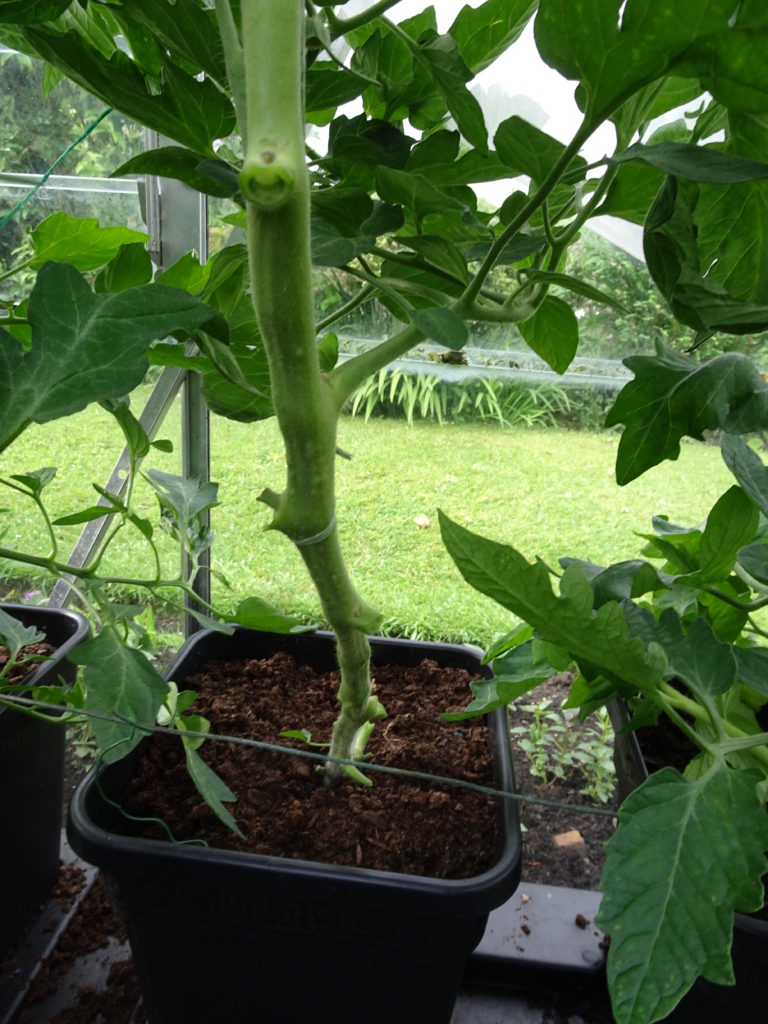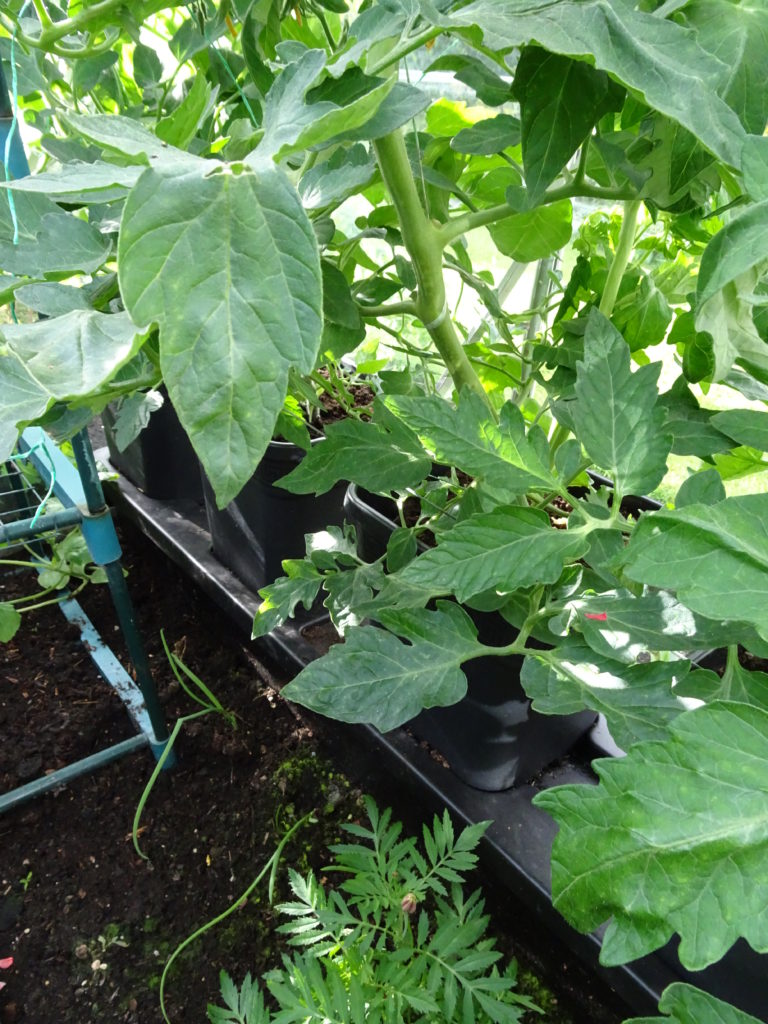Tomato Leaves On or Off?
It is a regular debate whether you should leave your tomato leaves on the plant or snap them off. For intermediate varieties I am strongly in the ‘get them off camp!’

Starting to remove lower leaves 5th June 2017
Why Remove Lower Leaves
- It removes one variable in the attempt to maximise crop yield. You are growing tomatoes not leaves!
- It helps allow the air to circulate and get an air-flow round the plant that reduces the chances of blight and disease.
- The sun can get to ripen the trusses of tomatoes.
- To combat diseases caused by splashes up from the soil.
- To open up your access to the roots for watering, feeding and checking for pests.
- To preserve NPK nutrients that would otherwise go into leaves. We are encouraged to pinch out the side shoots so amputating lower leaves is not much different.
- Upper leaves start to create shade and with less available light the lower leaves reach a point where they draw more sugars from the plant.
- As plants grow taller the lower levels of the greenhouse become more humid increasing the possibility of disease such as early blight and anthracnose.
- By removing the bottom leaves the greenhouse floor is cleaner and reduces any spread from soil to a plant from splashing water.
- Many commercial growers remove leaves.
Methods
- Remove from the bottom always leaving 12 main leaves. Some advocate one leaf per cluster and nearer 20 leaves are common in commercial production.
- Â Let the plant retain the upper leaves or if you are worried try leaving 1 in 3 on the plant. Snap off the lower leaves in preference to cutting.
- Trim unruly, yellow or damaged leaves. I also take off the harder darker leaves that have lost their vibrancy.
- Remove leaves that seem to be getting out of control.

The start of the Leaf Jungle
Other Comments
- There is the other school of thought that all leaves are helping photosynthesis. But do you need so much leaf for your intended crop.
- As leaves die they return most unused sugars back to the plant.
- Â Direct sunlight on fruit can cause yellow or green shoulders and cracking Shading can improve fruit yields.